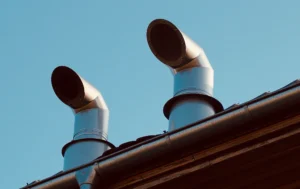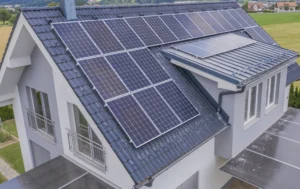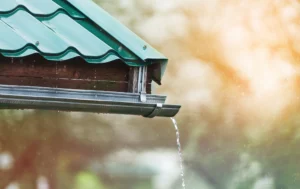Selecting The Right Roofing Materials
When it comes to building or renovating a home, the roof is one of the most crucial elements. A roof doesn’t just protect your home from the elements; it also plays a significant role in insulation, aesthetics, and long-term property value. Selecting the right materials for your new roofing project is a decision that can impact your home for decades. In this article, we’ll walk you through everything you need to consider when choosing the best roofing materials, from the climate and cost to aesthetic preferences and maintenance.
Factors to Consider When Choosing Roofing Materials
Climate and Weather Conditions
Your local climate is one of the most important factors to consider when selecting roofing materials. Different materials have different strengths and weaknesses depending on the weather they will be exposed to. If you live in an area with heavy rainfall, you’ll want materials that offer excellent water resistance. Conversely, in regions prone to high winds or storms, a more durable and secure option is necessary. Homeowners in areas with a lot of sunshine might want to consider materials that reflect heat to reduce energy costs.
How Weather Influences Roofing Material Choices
Weather directly affects the longevity and performance of your roof. For instance, metal roofs are excellent for hot climates because they reflect sunlight and reduce cooling costs. Meanwhile, asphalt shingles may be less suitable for areas with extreme heat, as they can degrade more quickly under intense sun exposure. Understanding how the climate interacts with your chosen roofing material will ensure your roof performs optimally for many years
Budget and Cost Considerations
Short-term vs. Long-term Costs
The initial cost of roofing materials can vary widely, but it’s important to think beyond the upfront price. While asphalt shingles are among the most affordable options, they may need to be replaced more frequently than more durable alternatives like slate or metal. Investing in higher-quality materials might have a higher initial cost, but it can save money in the long term due to reduced maintenance and longer lifespans.
Balancing Quality and Affordability
Finding the balance between quality and affordability is key. Consider the lifespan and performance of the materials versus their cost. For example, synthetic materials may offer the look of traditional options like wood or slate at a more affordable price. Discussing your budget with a professional roofing contractor can help you find materials that meet your financial needs without sacrificing quality.
Roof Design and Architecture
How Roof Shape Affects Material Selection
The shape and slope of your roof can impact the type of materials you should use. Some materials, such as tiles, are heavier and require a strong roof structure to support them. Other materials, like asphalt shingles, are more versatile and can be used on various roof types. Steeper roofs may require more specialised materials that can stay in place better and provide adequate water runoff.
Aesthetic Considerations for Your Home’s Style
Your roof is a prominent feature of your home’s exterior, so it’s important to choose materials that complement its overall design. A modern house might suit sleek metal roofing, while a traditional home could look more fitting with clay tiles or wood shingles. Consider how the material’s colour and texture will blend with the rest of your home.
Energy Efficiency and Sustainability
Choosing Energy-efficient Materials
In today’s world, energy efficiency is a priority for many homeowners. Choosing roofing materials that contribute to energy conservation can lower your heating and cooling bills. Metal roofing, for example, reflects solar heat, reducing the need for air conditioning. Alternatively, installing a roof with good insulation properties, like certain types of tiles, can help retain heat during colder months.
The Role of Sustainable and Eco-friendly Options
If sustainability is important to you, consider materials that are eco-friendly. Recycled metal roofing, sustainable wood shakes, or even solar tiles are all options for the environmentally conscious homeowner. These materials not only reduce your carbon footprint but can also improve your home’s energy efficiency.
Types of Roofing Materials
Asphalt Shingles
Asphalt shingles are one of the most popular roofing materials due to their affordability and ease of installation. They are available in a range of colours and styles, making them versatile for many homes. However, they tend to have a shorter lifespan compared to other materials and may not perform as well in extreme weather conditions.
Cost and Durability of Asphalt Shingles
Asphalt shingles are an economical choice, typically lasting 15-30 years depending on the quality. They are easy to replace and repair, but may require more frequent maintenance than other roofing options.
Metal Roofing
Metal roofs are known for their durability and longevity. They can withstand harsh weather conditions, including high winds and heavy rain, making them ideal for areas prone to storms. On the downside, they can be more expensive to install and may require specialised labour.
Why Metal Roofs Are Ideal for Certain Climates
Metal roofs are excellent in hot climates due to their reflective properties. They help keep homes cool by reflecting sunlight, which can reduce energy consumption. They are also resistant to fire, mould, and pests, adding to their appeal for certain regions.
Clay and Concrete Tiles
Clay and concrete tiles are durable and long-lasting, with some roofs lasting over 50 years. They are highly resistant to fire and provide excellent insulation. However, they are heavier than other materials and may require additional structural support.
Architectural Impact of Tile Roofing
Tiles offer a unique and attractive appearance, particularly suited to Mediterranean or Spanish-style homes. Their natural colours and textures can enhance the aesthetic appeal of your property, making them a popular choice for homeowners focused on design.
Slate Roofing
Slate is one of the most durable roofing materials available, with some roofs lasting over a century. It’s resistant to fire, mould, and weather damage. However, it is also one of the most expensive materials and requires a skilled contractor to install.
Durability and Lifespan of Slate Roofs
Slate is renowned for its longevity, often outlasting the building it’s installed on. While the initial cost is high, the long-term durability makes it a worthwhile investment for those looking for a low-maintenance option.
Wood Shakes and Shingles
Wood shakes and shingles provide a natural and rustic look, ideal for cottage-style homes. They offer good insulation but are less fire-resistant and may require regular maintenance to prevent rot or pest infestation.
Considerations for Fire Resistance and Maintenance
Some wood roofing options can be treated to improve fire resistance, but it’s important to check local building codes and regulations. Regular maintenance is necessary to keep the wood in good condition, especially in wet or humid climates.
Synthetic Roofing Materials
Synthetic roofing materials, such as rubber or polymer-based shingles, mimic the appearance of natural materials like wood or slate but are more affordable and lightweight. They are durable and require less maintenance but may lack the authentic look some homeowners desire.
Why Choose Synthetic Materials Over Natural Ones
Synthetic materials are often chosen for their durability and lower cost. They are also easier to install and maintain, making them a practical choice for many homeowners who want the look of traditional materials without the associated costs.
Longevity and Maintenance of Roofing Materials
Material Lifespan Comparisons
The lifespan of roofing materials varies widely. Slate can last over 100 years, while asphalt shingles typically last 15-30 years. Metal roofs fall somewhere in between, often lasting 40-70 years. Knowing the expected lifespan of your chosen material can help you plan for future repairs or replacements.
Maintenance Requirements for Different Roofing Types
Each roofing material has different maintenance needs. Asphalt shingles and synthetic materials are relatively low-maintenance, while wood shakes may require regular sealing or treatment. Understanding the maintenance demands can help you choose a material that fits your lifestyle.
How to Get Professional Advice for Your New Roofing Project
Working with a Roofing Contractor
A professional roofing contractor can provide invaluable advice when selecting materials. They can assess your home’s structure, recommend suitable options, and ensure the materials meet local building codes.
How to Evaluate Roofing Warranties and Guarantees
When selecting roofing materials, it’s important to review the warranty offered. A good warranty can provide peace of mind and protect you from unexpected repair costs. Be sure to discuss warranties with your contractor and understand what is covered.
Summary
Choosing the best materials for your new roofing project is a crucial decision that impacts your home’s safety, appearance, and long-term value. From assessing your climate to balancing costs and exploring material options, there are many factors to consider. Consulting with a professional can help you make the best choice and ensure your new roof stands the test of time.
Keen to learn more about your roofing needs? Contact All Custom Roofing today and we can provide expert advice.



